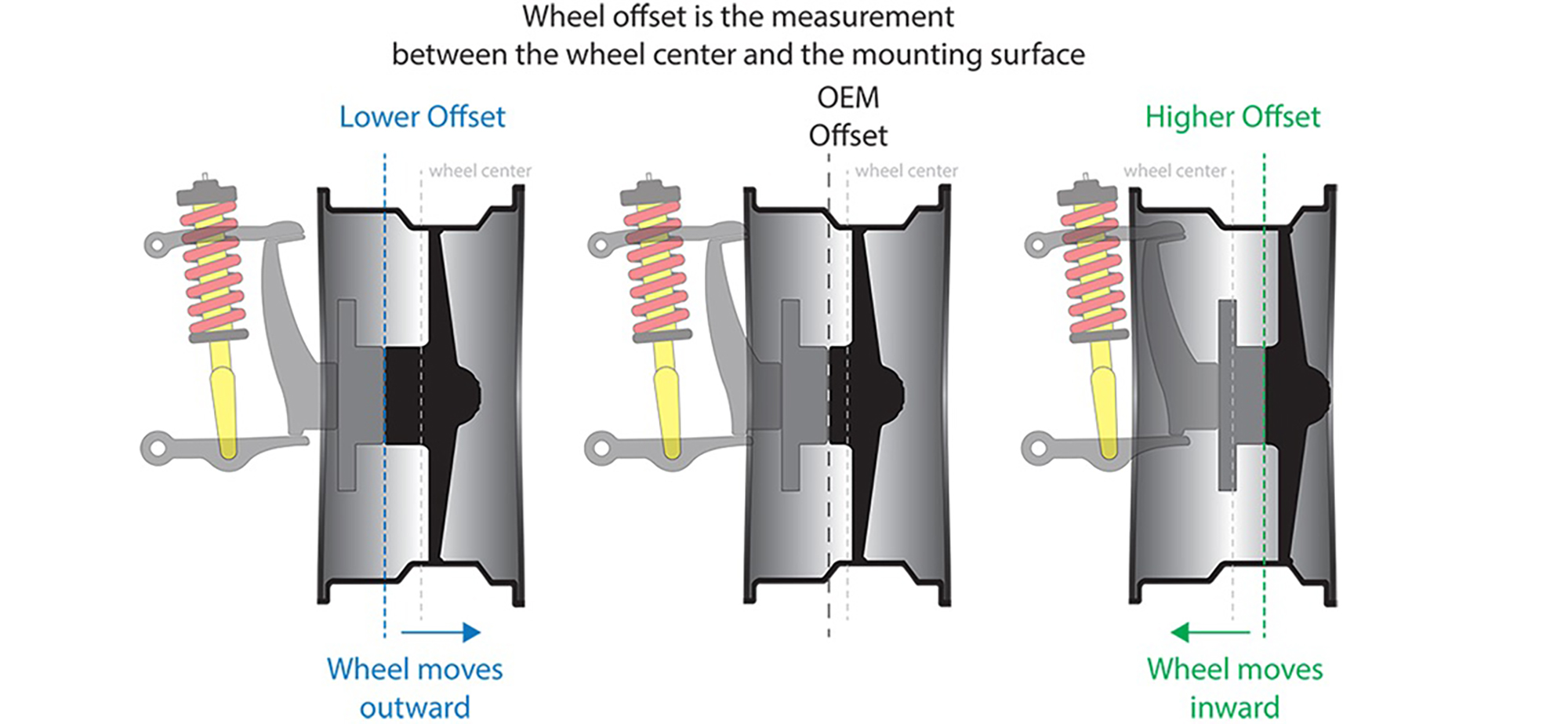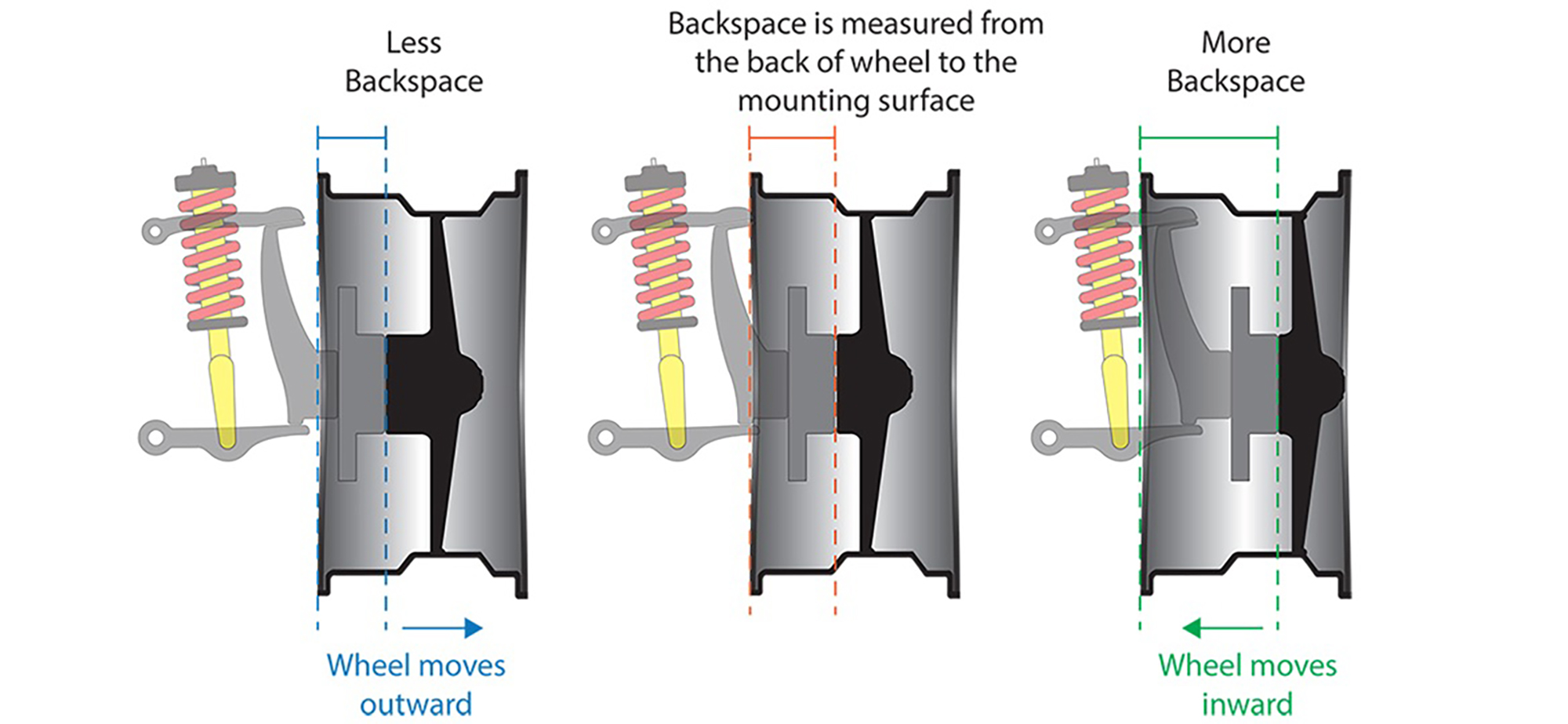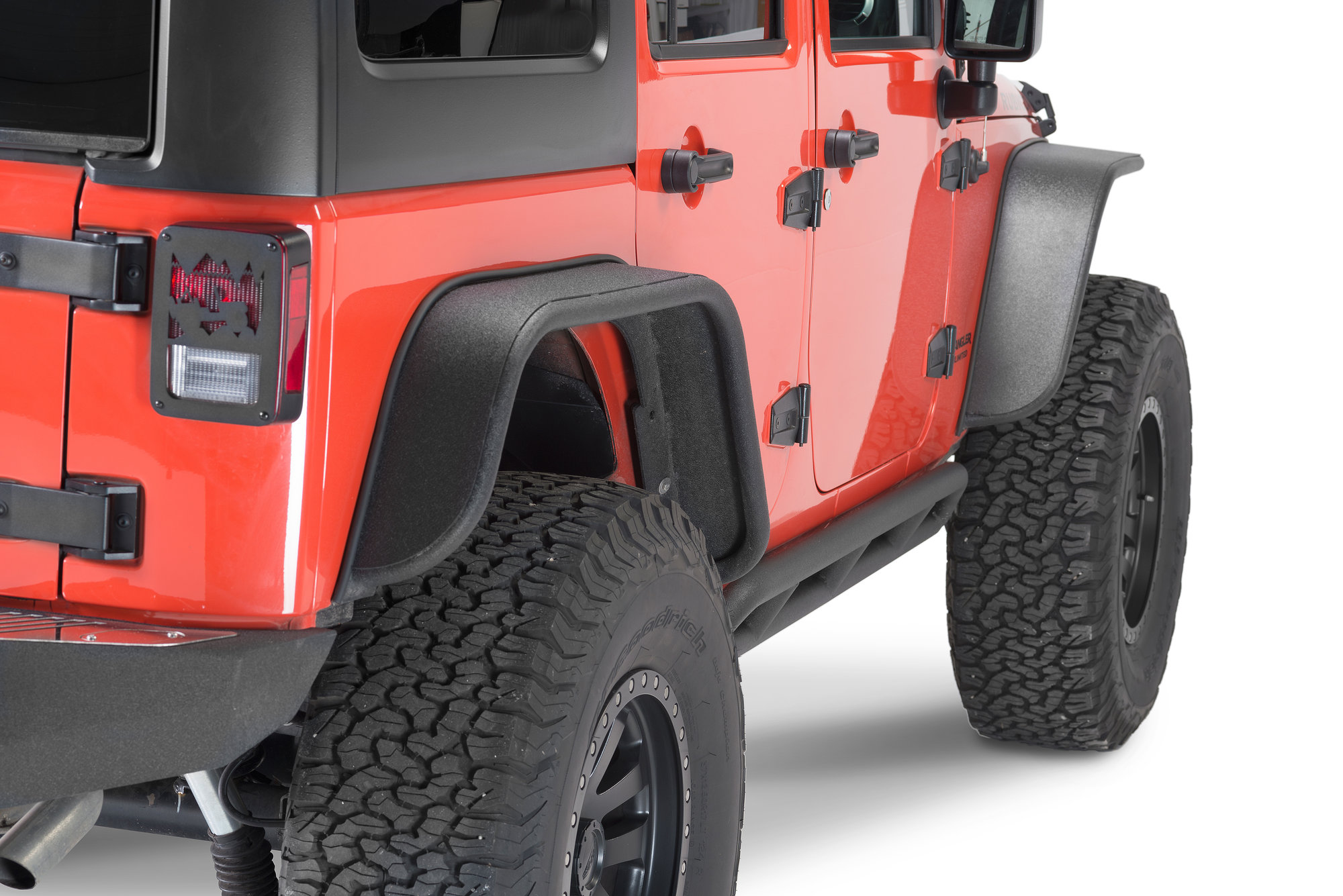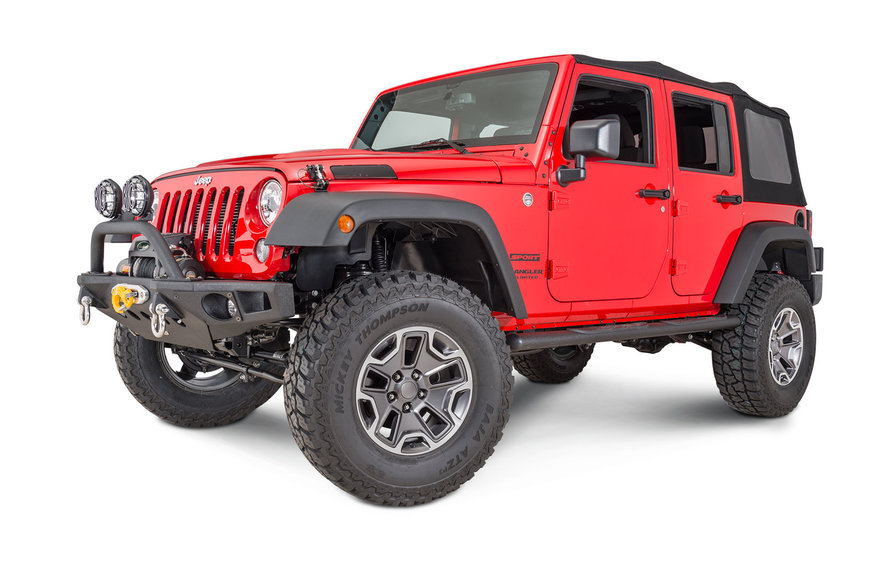by Matt Konkle
Torque Managing Editor
Starting a new modification project on your Jeep can be an exhilarating feeling. Heck, even making that decision to begin one is exciting. However, before you dive into the deep end and start gathering products, take a few beats to make sure what you are gathering is going to do, well, what you require for your needs.
That's because while there are so many things out there that make a difference in the way your Jeep looks or performs, it is pretty easy to forget there can be some practical and fitment issues that may really affect your Jeep.
This is especially true when it comes to replacing your Jeep's factory wheels.
Sure, it may not be an intensive project like lifting the vehicle's suspension or swapping out brake lines and rotors, but a new set of wheels like Lynx Trailgunner or our Morphic wheels is certainly enough to get the blood flowing because they add customization — a personal touch thanks to all kinds of designs, styles, materials and colors.
These days, Jeep wheels come in plenty of different designs and sizes so it is not just a matter of matching up the bolt pattern and corresponding tire.
Beyond styling, colors, design and, yes, even the material, comes the two most important factors – wheel offset and backspacing – that will determine whether those new additions work efficiently and effectively. These two things also happen to be something that many Jeep owners, new and veteran alike, do not really understand very well. If at all.
So, what is wheel offset and backspacing, and why are these things important?
Quite simply, these are both measurements that determine how far into the body, or out, those new wheels will sit when installed. Ideally, you can think of it as purchasing shoes. You may find ones that lengthwise are sized right, but may be too tight or too loose when you put them on your feet. You really want to find ones that fit perfectly so you, and they, don't have other issues down the road.
With wheels, you may already know the right overall size to fit on your specific tires, but purchasing ones with an improper offset or backspace could pull the wheel in too close – providing less clearance between tire and suspension – or too far which is not ideal unless the vehicle is lifted with larger tires. Both of these situations can cause ride quality issues.

Wheel offset is considered the distance from the center of your wheel to its mounting surface, which is part of the wheel that comes together with the rotor on installation. In other words, it is the distance between the wheel's hub mounting surface and centerline of the wheel. This measurement helps define where the wheel will sit and is typically measured in millimeters.
The higher the offset, the more inward the wheel will install, leading to a narrower vehicle stance and less clearance between the suspension and your tire’s inside edge. The lower the offset, the more outward it will install which leads to a wider vehicle stance and more clearance between tire and suspension. This, generally, is better for those who have added a suspension lift along with larger tires.

Wheel backspacing is a related measurement, but a bit more complicated as it is the distance from your wheel’s inside edge to its mounting face - equal to half the wheel’s width plus offset, plus a half inch. In simpler terms, it is the distance from the hub to the back of the wheel.
Rims with more backspace have less inside wheel clearance and can potentially rub up against the vehicle’s suspension, steering system and other vehicle components. Less backspace on a wheel means more inside wheel clearance and little risk of rubbing. Again, those who have (or are planning) on lifting their vehicles and adding larger tires, should look for wheels with lower backspacing.

From the factory, most Jeep wheels have a positive, higher offset as designers spent all kinds of hours making sure there was enough clearance between the wheel and tire, and items such as your tie-rod ends, brake calipers, fender well, frame and other suspension components. So when you are looking to change wheels, but planning to leave everything else the same, it’s best to use those factory offset and backspace measurements during the purchase.
However, those upgrading to bigger tires, along with a larger suspension lift, usually can’t get away with the factory wheel setup. That positive offset and higher backspacing can cause contact between the wheel/tire and suspension components when turning or during off-road articulation.
Many aftermarket wheels will reduce both and work well with larger tires and suspension lifts — providing the needed clearance to perform under all conditions, as well as giving the vehicle more stability.
There are a few drawbacks to keep in mind, though. Wheels with lower offset and backspace generally will increase your turning radius, and place a bit more stress on the lugs, bearings and axle housings. They can also push those tires out past your fender flares, which is illegal in many states.
So take the time and make sure the wheels you choose are more than just good-looking items that complement other aspects of your Jeep. Make sure they have the proper offset and backspacing to fit exactly what you are looking to accomplish with your vehicle.





















